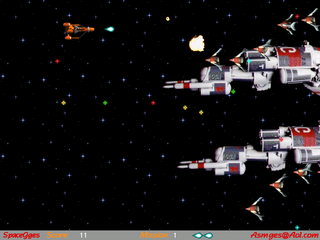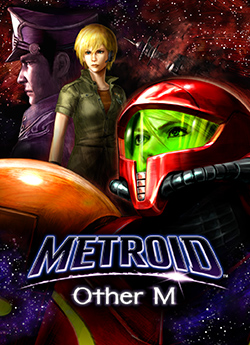Related Research Articles

Doom is a first-person shooter game developed and published by id Software. Released on December 10, 1993, for DOS, it is the first installment in the Doom franchise. The player assumes the role of a space marine, later unofficially referred to as Doomguy, fighting through hordes of undead humans and invading demons. The game begins on the moons of Mars and finishes in hell, with the player traversing each level to find its exit or defeat its final boss. It is an early example of 3D graphics in video games, and has enemies and objects as 2D images, a technique sometimes referred to as 2.5D graphics.

Pitfall! is a video game developed by David Crane for the Atari Video Computer System and released in 1982 by Activision. The player controls Pitfall Harry, who has a time limit of 20 minutes to seek treasure in a jungle. The game world is populated by enemies and hazards that variously cause the player to lose lives or points.
Gonzalo Frasca is a game designer and academic researcher focusing on serious and political videogames. His blog, Ludology.org, was cited by NBC News as a popular designation for academic researchers studying video games. For many years, Frasca also co-published Watercoolergames with Ian Bogost, a blog about serious games.

A video game genre is an informal classification of a video game based on how it is played rather than visual or narrative elements. This is independent of setting, unlike works of fiction that are expressed through other media, such as films or books. For example, a shooter game is still a shooter game, regardless of where or when it takes place. A specific game's genre is open to subjective interpretation. An individual game may belong to several genres at once.

Tony Hawk's Underground is a 2003 skateboarding video game and the fifth entry in the Tony Hawk's series after Tony Hawk's Pro Skater 4. It was developed by Neversoft and published by Activision in 2003 for the GameCube, PlayStation 2, Xbox, and Game Boy Advance. In 2004, it was published for Microsoft Windows in Australia and New Zealand as a budget release.

Combat is a 1977 video game by Atari, Inc. for the Atari Video Computer System. In the game, two players controlling either a tank, a biplane, or a jet fire missiles at each other for two minutes and sixteen seconds. Points are scored by hitting the opponent, and the player with the most points when the time runs out wins. Variations on the gameplay introduce elements such as invisible vehicles, missiles that ricochet off of walls, and different playing fields.
An interactive film is a video game or other interactive media that has characteristics of a cinematic film. In the video game industry, the term refers to a movie game, a video game that presents its gameplay in a cinematic, scripted manner, often through the use of full-motion video of either animated or live-action footage.

Basic Math is an educational video game for the Atari Video Computer System. The game was developed at Atari, Inc. by Gary Palmer. The game involves a series of ten arithmetic problems involving addition, subtraction, multiplication, or division. The player can edit different game play modes to alter how the numbers in the problem are chosen, or if their questions are timed. The game was released in 1977 as one of the earliest releases for the console.

The Adventures of Batman & Robin is a series of video game adaptations released between 1994 and 1995 featuring the DC Comics characters Batman and Robin based on Batman: The Animated Series. The games were released for numerous platforms, with the Genesis, Game Gear, and Sega CD versions published by Sega while the Super NES version was published by Konami.

Diary of a Camper is an American short film released in October 1996 that was made using id Software's first-person shooter video game Quake. The film was created by the Rangers, a clan or group of video game players, and first released over the Internet as a non-interactive game demo file. The minute and a half-long video is commonly considered the first example of machinima—the art of using real-time, virtual 3D environments, often game engines, to create animated films. The story centers on five members of the Rangers clan fighting against a lone camper in a multiplayer deathmatch.

A sandbox game is a video game with a gameplay element that provides players a great degree of creativity to interact with, usually without any predetermined goal, or alternatively with a goal that the players set for themselves. Such games may lack any objective, and are sometimes referred to as non-games or software toys. More often, sandbox games result from these creative elements being incorporated into other genres and allowing for emergent gameplay. Sandbox games are often associated with an open world concept which gives the players freedom of movement and progression in the game's world. The term "sandbox" derives from the nature of a sandbox that lets children create nearly anything they want within it.

Trauma Team is a 2010 simulation video game developed and published by Atlus for the Wii. It is the fifth and current final entry in the Trauma Center series. The narrative of Trauma Team follows six protagonists who operate in different sectors of the medical profession, and their united conflict with a virulent infection dubbed "Rosalia". The gameplay combines medical simulation with visual novel-style storytelling through motion comic cutscenes. The different storylines focus on simplified versions of surgery, emergency medicine, endoscopy, diagnosis, orthopedics and forensic medicine.

Metroid: Other M is an action-adventure game developed by Team Ninja and Nintendo SPD and published by Nintendo for the Wii on August 31, 2010. It is part of the Metroid series, and takes place between the events of Super Metroid and Metroid Fusion. The player controls intergalactic bounty hunter Samus Aran, who investigates a derelict space station with a Galactic Federation platoon, including her former commanding officer, Adam Malkovich.
An adventure game is a video game genre in which the player assumes the role of a protagonist in an interactive story, driven by exploration and/or puzzle-solving. The genre's focus on story allows it to draw heavily from other narrative-based media, such as literature and film, encompassing a wide variety of genres. Most adventure games are designed for a single player, since the emphasis on story and character makes multiplayer design difficult. Colossal Cave Adventure is identified by Rick Adams as the first such adventure game, first released in 1976, while other notable adventure game series include Zork, King's Quest, Monkey Island, Syberia, and Myst.

Asura's Wrath is an action video game developed by CyberConnect2 and published by Capcom. It was first announced at the Tokyo Game Show in 2010, and was released worldwide in February 2012. The game was released on PlayStation 3 and Xbox 360.

Regular Show: Mordecai and Rigby in 8-Bit Land is a video game based on the Cartoon Network series Regular Show. It was developed by WayForward Technologies and was released exclusively for the Nintendo 3DS in North America on October 29, 2013; Europe on November 8, 2013; and Australia on November 12, 2013. The game was delisted from Nintendo eShop some point between 2017 and 2019, most likely due to an expiring license.

Procedural rhetoric or simulation rhetoric is a rhetorical concept that explains how people learn through the authorship of rules and processes. The theory argues that games can make strong claims about how the world works—not simply through words or visuals but through the processes they embody and models they construct. The term was first coined by Ian Bogost in his 2007 book, Persuasive Games: The Expressive Power of Videogames.
Video game writing is the art and craft of writing scripts and narratives for video games. Similar to screenwriting, it is typically a freelance profession. It includes many differences from writing for film, due to the non-linear and interactive nature of most video games, and the necessity to work closely with video game designers and voice actors. There are many differing types of text in video games in comparison to stage shows or movies, including written text, foreign or made-up languages, and often situation-based information. Especially when developing Triple A games, more than one writer will be required to create the game, split into different roles.

A cutscene or event scene is a sequence in a video game that is not interactive, interrupting the gameplay. Such scenes are used to show conversations between characters, set the mood, reward the player, introduce newer models and gameplay elements, show the effects of a player's actions, create emotional connections, improve pacing or foreshadow future events.

WWE 2K22 is a 2022 professional wrestling sports video game developed by Visual Concepts and published by 2K. It is the twenty-second overall installment of the video game series based on WWE, the ninth game under the WWE 2K banner, and the successor to 2019's WWE 2K20. It was released on March 11, 2022, for PlayStation 4, PlayStation 5, Windows, Xbox One, and Xbox Series X/S. The follow-up title, WWE 2K23, was released on March 14, 2023.
References
- 1 2 3 4 Young, Shamus (2019-05-21). "Rage 2: Shut Up and Let me Shoot Stuff". The Escapist. Archived from the original on 2022-11-12. Retrieved 2022-11-12.
- 1 2 3 4 5 6 Bogost, Ian (2017-04-25). "Video Games Are Better Without Stories". The Atlantic. Archived from the original on 2020-11-28. Retrieved 2022-11-12.
- ↑ Lawardorn, Damien (2020-01-27). "The Rise, Fall, and Place of Environmental Storytelling in Games". The Escapist. Archived from the original on 2022-11-12. Retrieved 2022-11-12.
- 1 2 Leary, Kyree (2016-05-03). "A grungy machine-age videogame prioritizes storytelling over difficulty". Kill Screen - Previously. Archived from the original on 2022-11-12. Retrieved 2022-11-12.
- ↑ "Let's talk about video game lore". Destructoid. 2022-07-15. Archived from the original on 2022-11-11. Retrieved 2022-11-12.
- ↑ Sheehan, Jason (December 31, 2017). "Reading The Game: Inside". NPR . Archived from the original on November 15, 2022. Retrieved November 14, 2022.
- 1 2 3 4 5 Byrne, Seamus. "The evolution of video game stories: from Nolan Bushnell to Blizzard Entertainment and beyond". CNET. Archived from the original on 2022-11-11. Retrieved 2022-11-12.
- ↑ Bronstring, Marek (12 February 2012). "What are adventure games?". Adventure Gamers. Nito Games - Adventure Gamers. Archived from the original on 26 January 2021. Retrieved 24 January 2021.
Adventure games focus on puzzle solving within a narrative framework, generally with few or no action elements.
- ↑ Good, Owen S. (2017-12-07). "2017: The year of story-driven sports video games". Polygon. Archived from the original on 2022-11-11. Retrieved 2022-11-12.
- ↑ Maher, Cian (2022-09-03). "Goat Simulator 3: Still a silly game about being a really annoying goat". Polygon. Archived from the original on 2022-11-11. Retrieved 2022-11-12.
Rather than being a pure sandbox that's exclusively designed to facilitate mayhem, Goat Simulator 3 has a story mode.
- ↑ "Grand Theft Auto V - Rockstar Games". www.rockstargames.com. Archived from the original on 2022-11-10. Retrieved 2022-11-11.
Current players can transfer both GTAV Story Mode progress and GTA Online characters...
- 1 2 Bush, Stephen (2021-06-09). "I play video games on easy mode. Here's why". New Statesman. Archived from the original on 2022-11-11. Retrieved 2022-11-11.
- ↑ Ramsey, Robert (2017-02-16). "Narrative Difficulty Returns to Mass Effect: Andromeda for Those Who Just Want Story". Push Square. Archived from the original on 2022-11-12. Retrieved 2022-11-12.
- 1 2 Francis, Tom (2012-03-07). "Mass Effect 3 Narrative Mode and Action Mode explained". PC Gamer. Archived from the original on 2018-06-22. Retrieved 2022-11-12.
- ↑ Byrd, Matthew (2020-02-12). "Half-Life: The Forgotten Innovations of the PC Shooter". Den of Geek. Archived from the original on 2022-11-15. Retrieved 2022-11-15.
- ↑ "Half-Life at 20: why it is the most important shooter ever made". The Guardian. 2018-11-21. Archived from the original on 2022-11-15. Retrieved 2022-11-15.
- ↑ Robertson, Adi (2018-11-19). "Half-Life turns 20 today, and it feels more original than ever". The Verge. Archived from the original on 2022-11-15. Retrieved 2022-11-15.
- ↑ Macgregor, Jody (2020-09-04). "Years later, Half-Life's influence is still being felt". PC Gamer. Archived from the original on 2022-11-15. Retrieved 2022-11-15.
- ↑ Meikleham, Dave (2022-11-02). "The 30 best video game stories ever". gamesradar. Archived from the original on 2014-04-22. Retrieved 2022-11-12.
- ↑ "The 25 Best Interactive Story Games". PCMAG. Archived from the original on 2022-11-12. Retrieved 2022-11-12.
- ↑ "The best story-driven video games to play in 2022". For The Win. 2022-05-30. Archived from the original on 2022-11-26. Retrieved 2022-11-12.
- 1 2 Bishop, Bryan (2013-06-13). "Lucas and Spielberg on storytelling in games: 'it's not going to be Shakespeare'". The Verge. Archived from the original on 2022-11-12. Retrieved 2022-11-14.
- ↑ Jackson, Ashawnta (2022-03-05). "Are Video Games Like Novels?". JSTOR Daily. Archived from the original on 2022-11-11. Retrieved 2022-11-15.
- 1 2 3 Hayot, Eric (2021). "Video Games & the Novel". Daedalus. 150 (1): 178–187. doi: 10.1162/daed_a_01841 . ISSN 0011-5266. JSTOR 48609832. S2CID 230714738. Archived from the original on 2022-11-14. Retrieved 2022-11-15.
- ↑ Krishna, Swapna. "Help, I'm Stuck in Cutscene Hell". Wired. ISSN 1059-1028. Archived from the original on 2022-11-12. Retrieved 2022-11-12.
- 1 2 Kozak, Oktay Ege (2020-06-08). "The Case For Story Mode in Videogames". pastemagazine.com. Archived from the original on 2022-11-11. Retrieved 2022-11-12.
- ↑ Kuchera, Ben (2020-10-06). "The genius of Hades' God Mode". Polygon. Archived from the original on 2022-11-12. Retrieved 2022-11-12.
- ↑ "Doom Eternal review - the same orgiastic thrills with a creeping weight of story". Eurogamer.net. 2020-03-17. Archived from the original on 2022-11-11. Retrieved 2022-11-12.
- ↑ "GDC Austin 09: Storytelling Through Independent Games". Destructoid. 2009-09-19. Archived from the original on 2022-11-11. Retrieved 2022-11-12.
- ↑ John Carmack [@id_aa_carmack] (August 17, 2018). "This old quote still pops up, but I caveat it today -- there are undeniably lots of games where the story is the entire point, and they can be done well. I do still hold that the most important games have been all about the play, not the story" (Tweet). Archived from the original on 2019-11-14 – via Twitter.
- ↑ Lindbergh, Ben (2020-03-20). "'Doom: Eternal' Is Bigger, Faster, and More Badass Than Its Predecessors". The Ringer. Archived from the original on 2022-11-12. Retrieved 2022-11-12.